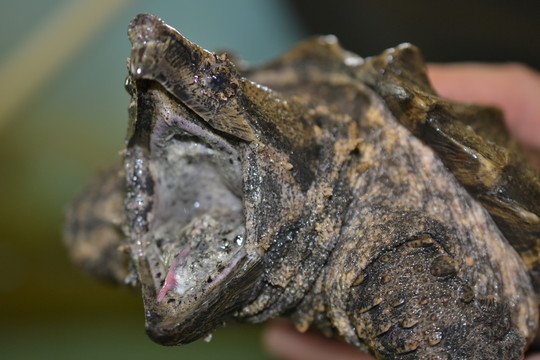Wildlife Department Offers Winter Waterfowl Report
Gusty north winds are driving in migrating flocks of ducks, geese and cranes; luring many wildlife watchers and hunters to our state’s wetlands and reservoirs. “Early season cold fronts can bring in the whole gamut of waterfowl to our state,” said Kelvin Schoonover, biologist with the Wildlife Department. “Bird densities and movements will shift across the state with weather conditions and other variables, but duck food is typically more plentiful early in the season and temperatures are usually a little more bearable for duck hunters and watchers.”
Schoonever and other Wildlife Department biologists and game wardens share reports from 14 of the state’s popular waterfowl spots every other week at wildlifedepartment.com. The waterfowl reports outline each area’s habitat conditions as well as the hunter and bird activity throughout the season.
Waterfowl Status Check
Species Spotlight: American Tree Sparrow
Fall is a season of bird turnover and Oklahoma’s sparrows are no exception. At least half of our sparrow species rotate back to the state each fall, with American tree sparrows typically arriving in early November. In Oklahoma these small, streaked birds are most abundant in northern and western counties where they can be found in loose flocks. They are best identified by their bi-colored bill (black upper bill; yellow lower bill), rusty cap and dark spot on the breast.
Facts, photos, maps and calls are waiting at allaboutbirds.org

Survey Team Evaluates Potential of Five River Segments for Alligator Snapping Turtles
Conservation agencies and groups have been partnering for nearly two decades to release young alligator snapping turtles into four Oklahoma rivers as a way to restore the behemoth turtles in our state. After fine-tuning the release strategy and monitoring the growth and survival of the released turtles, the Wildlife Department is considering adding young turtles to more rivers. To find out which rivers are best suited as potential reintroduction sites we partnered with Missouri State University in 2018 to gauge the overall turtle community and habitat conditions of five river segments.
Survey Highlights
- More than 1,200 turtles were tagged and released as part of the survey; red-eared sliders made up nearly 70 percent of the captures. Eight species of turtles were documented, with the highest diversity rating in the Deep Fork River.
- Twenty alligator snapping turtles were found in two river segments. The majority were juveniles with an average weight of 9.6 pounds. The largest alligator snapping turtle captured and released during the study was a female that weighed 92.6 pounds.
- Alligator snapping turtles need different habitat characteristics at different stages of life. Survey sites with the turtles present typically had a low current, were shaded by a moderately full tree canopy and had tall, steep slopes.
- A stretch of the Neosho and Poteau rivers had reproducing populations of alligator snapping turtles that currently do not need to be supplemented. A second stretch of the Neosho River and its secluded tributaries are most suitable for future reintroductions.
Check out the Full Report
This project was funded by ODWC’s State Wildlife Grants Program Grant F17AF01213 and Missouri State University.

Rare Birds Visit Lake Thunderbird
A migrating flock of 10 endangered whooping cranes stopped at Lake Thunderbird near Norman Nov. 1-2 on their way to coastal Texas. The birds were first spotted by Deena Parsons Friday afternoon and are thought to have roosted in the area before leaving early Saturday morning. This is the first verified report of whooping cranes at Lake Thunderbird (and possibly for Cleveland County). Whooping cranes are the tallest bird in North America and typically migrate through Oklahoma in April and late October as they travel to and from their Canadian breeding grounds.
Get more wildlife updates by following the Wildlife Diversity Facebook page
|